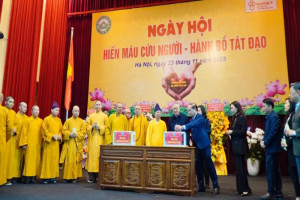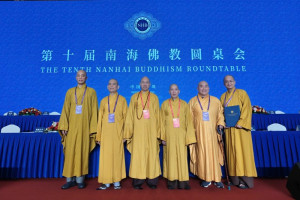
There is a sentence to describe the architectural beauty of folk works: “cầu Nam, chùa Bắc, đình Đoài” (Southern bridge, Northern pagoda, Western communal house). With the specific architecture, Tay Dang communal house is highly appreciated in the Vietnamese communal house system.
Located in Tay Dang, Ba Vi, Tay Dang communal house is classified as one of the six most famous communal houses in the Mac Dynasty (1527-1683) and is now one of the rare intact Mac dynasties architecture left until today.
"Đoài" is the eighth hexagram in the eight trigrams, corresponding to the west, so people are accustomed to using "Doai" to refer "the west", and Doai is also the location of the house, similar to the schematic layout of many other ancient communal systems in the Northern countryside.
In Doai land, the communal house architecture has its own characteristic that four sides are often left open, not walled. At the end of the 19th century, the Tay Dang campus had its gate and the two towers called Ta - Huu Mac.

Dai Dinh Building with pillars symbolizes the image of phoenix dancing, qilin sitting on the top of the pillar. (Photo: Vietnamnet)
In Tay Dang, the architecture of Dai Dinh building is a typical highlight, with a frame of 3 rooms with 2 wings, a large-sized pillar system raising the entire roof of the house. Because the roof in Tay Dang is designed in the "Gia Chieng" style, it still retains the roof wings, decorated two sides with the theme of fairy, dragon, and phoenix.
In the architecture of the Mac era, pillars on either side of the wings are often intricately carved with themes of elves, humans, mascots, and animals. The major use of the twisting technique in wood carving is the Court of Dai Dinh behind the symbolic pillar system with the image of phoenix dancing - dancing on the top of the pillar a typical art style of the Mac era. This pattern can be seen repeatedly in the bars.

Slender decorative lines with jackfruit wood material. (Photo: Vietnamnet)

The Mac-style sculpture in Tay Dang communal house is nearly 500 years old. (Photo: Vietnamnet)

Fairy carvings and decorations on the fortress at Tay Dang communal house (Photo: Vietnamnet)
In terms of material, Tay Dang communal house architecture uses jackfruit wood, so the details carved and decorated for truss are in an elegant style, more impressive and softer than the touch on the ironwood floor in the later periods. One of the typical carvings of Mac art is the dragon image on the residual system in the Dai Dinh period. The dragon is shown on a small scale, with vivid and flexible blade.
On some residual ends, the dragon faces the nave. The same way of carving is shown on the ear-column. This unique decoration style until the time of Le Trung Hung is no longer seen in the temple architecture.
The carved windshield system features bold folk art of the Mac dynasty, which also saves images of the males and females carrying children, statues of fairy - dragons, and decorative details. Many other architectural structures also had small carvings with many rich topics such as boating, trawling, dragons, elephant riding, lion riding ...

The sculptures of art, flower vine, dragon, and fairy have a unique style of Mac art on architectural structures of the communal house. (Photo: Vietnamnet)

Tay Dang communal house possesses special touches. It is a board system on seven porches with sculpted lines in strokes, expressing the theme of flowers and leaves, expressed flexibly, soft as silk waving in the wind. (Photo: Vietnamnet)

In Tay Dang communal house, in addition to the beauty of architecture and space, there is also an art treasure that has been preserved from the Mac dynasty. (Photo: Vietnamnet)

As one of the rare surviving Mac-architectural temples, Dinh Tay Dang deserves to be preserved and respected. (Photo: Vietnamnet)
Source: vnexplorer.net




